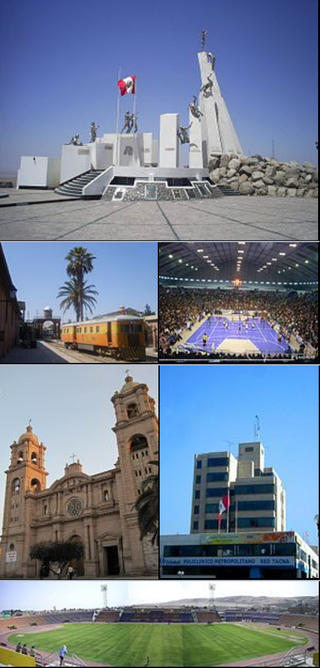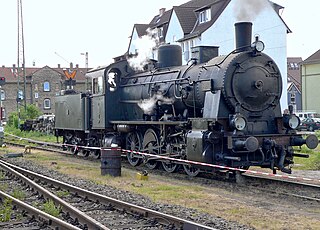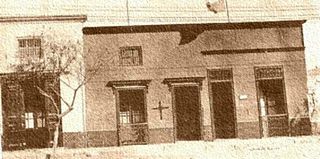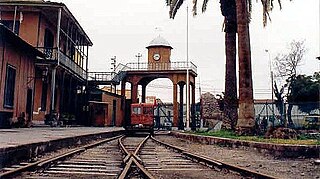
Tacna, officially known as San Pedro de Tacna, is a city in southern Peru and the regional capital of the Tacna Region. A very commercially active city, it is located only 35 km (22 mi) north of the border with Arica y Parinacota Region from Chile, inland from the Pacific Ocean and in the valley of the Caplina River. It is Peru's tenth most populous city.

Arica is a commune and a port city with a population of 222,619 in the Arica Province of northern Chile's Arica y Parinacota Region. It is Chile's northernmost city, being located only 18 km (11 mi) south of the border with Peru. The city is the capital of both the Arica Province and the Arica and Parinacota Region. Arica is located at the bend of South America's western coast known as the Arica Bend or Arica Elbow. At the location of the city are two valleys that dissect the Atacama Desert converge: Azapa and Lluta. These valleys provide citrus and olives for export.

The Alto de la Alianza Monumental Complex is a historical monument and landmark complex in the south of Peru, near the city of Tacna.

Empresa de los Ferrocarriles del Estado is the national railway and the oldest state-run enterprise in Chile. It manages the infrastructure and operating rail services in the country.
Kitson and Company was a locomotive manufacturer based in Hunslet, Leeds, West Yorkshire, England.

Rail transport in Peru has a varied history. Peruvian rail transport has never formed a true network, primarily comprising separate lines running inland from the coast and built according to freight need rather than passenger need.

Pisagua is a Chilean port on the Pacific Ocean, located in Huara comuna (municipality), in Tarapacá Region, northern Chile. In 2007, the new province of El Tamarugal was established and the comuna of Huara, previously within the province of Iquique, was incorporated to the newly created province.

The Prussian Class G 8 locomotives were eight-coupled, superheated, freight locomotives operated by the Prussian state railways. There were two variants: the G 8 built from 1902 with a 14 tonne axle load and the "reinforced G 8" built from 1913 with a 17-tonne axle load. The latter was the most numerous German state railway (Länderbahn) locomotive, over 5,000 examples being built.

The Arica–La Paz railway or Ferrocarril de Arica–La Paz (FCALP) was built by the Chilean government under the Treaty of Peace and Friendship of 1904 between Chile and Bolivia. The railway line was inaugurated on 13 May 1913 and is the shortest line from the Pacific Coast to Bolivia. It is 440 km (273 mi) long, of which 233 km (145 mi) is in Bolivian territory. The Railway is meter gauged. However, until 1968, it was rack worked over a 43 km section, on the Chilean side, between Central and Puquios. The line reaches a height of 4257 meters above sea level at General Lagos. The Chile - Bolivia border is crossed between the stations of Visviri and Charaña. When the railway is in operation, it is used for the export of Bolivian minerals and some agricultural production as well as the import of merchandise into Bolivia.

The Chilenization of Tacna, Arica, and Tarapacá was a process of forced transculturation or acculturation in the areas which were invaded and incorporated by Chile since the War of the Pacific (1879–1883). The aim of the Chilenization was to create a dominance of Chilean traditions and culture in that region, in preference to those of the Peruvian population. The British desire to reunite all saltpeter mines under one political administration was also a major factor that influenced the outcome of the war.

The Rome Porta San Paolo Railway Park Museum is a museum in Rome (Italy), concerned with railway and tram transportation. It is housed next to the Roma Porta San Paolo railway station and the Piramide station of the metro.
Tacna Locomotive park, is a park, located in the center of the city of Tacna, Peru.
Tacna Historical Museum is a museum located in the center of the city of Tacna, Peru.

The Comodoro Rivadavia and Colonia Sarmiento Railway was an Argentine railway company that built and operated a broad gauge line that connected the port of Comodoro Rivadavia with Colonia Sarmiento in Chubut Province. The FCCRCS -belonging to Argentine State Railway- also connected to Central Chubut Railway.

The Russian Railway Museum is situated next to Baltiysky railway station in Saint Petersburg. The museum was established in 1978, its current site and exhibition opened to public on 1 November 2017. The museum utilizes the nineteenth century locomotive shed of the Peterhof Railway built in 1857–1858, however a large second exhibition building and open exhibition areas have been added.

The Chilean–Peruvian territorial dispute is a territorial dispute between Chile and Peru that started in the aftermath of the War of the Pacific and ended significantly in 1929 with the signing of the Treaty of Lima and in 2014 with a ruling by the International Court of Justice. The dispute applies since 2014 to a 37,610 km2 territory in the Chile–Peru border, as a result of the maritime dispute between both states.

The Tacna–Arica railway is a railway that connects the cities of Tacna and Arica, located in Peru and Chile, respectively. Agreed upon as part of the 1929 Treaty of Lima, it has a length of 62 km (39 mi) and a track gauge of 1,435 mm (4.708 ft). It is currently administered by the Regional Government of Tacna and operates since May 28, 2016, after being suspended since March 12, 2012.














